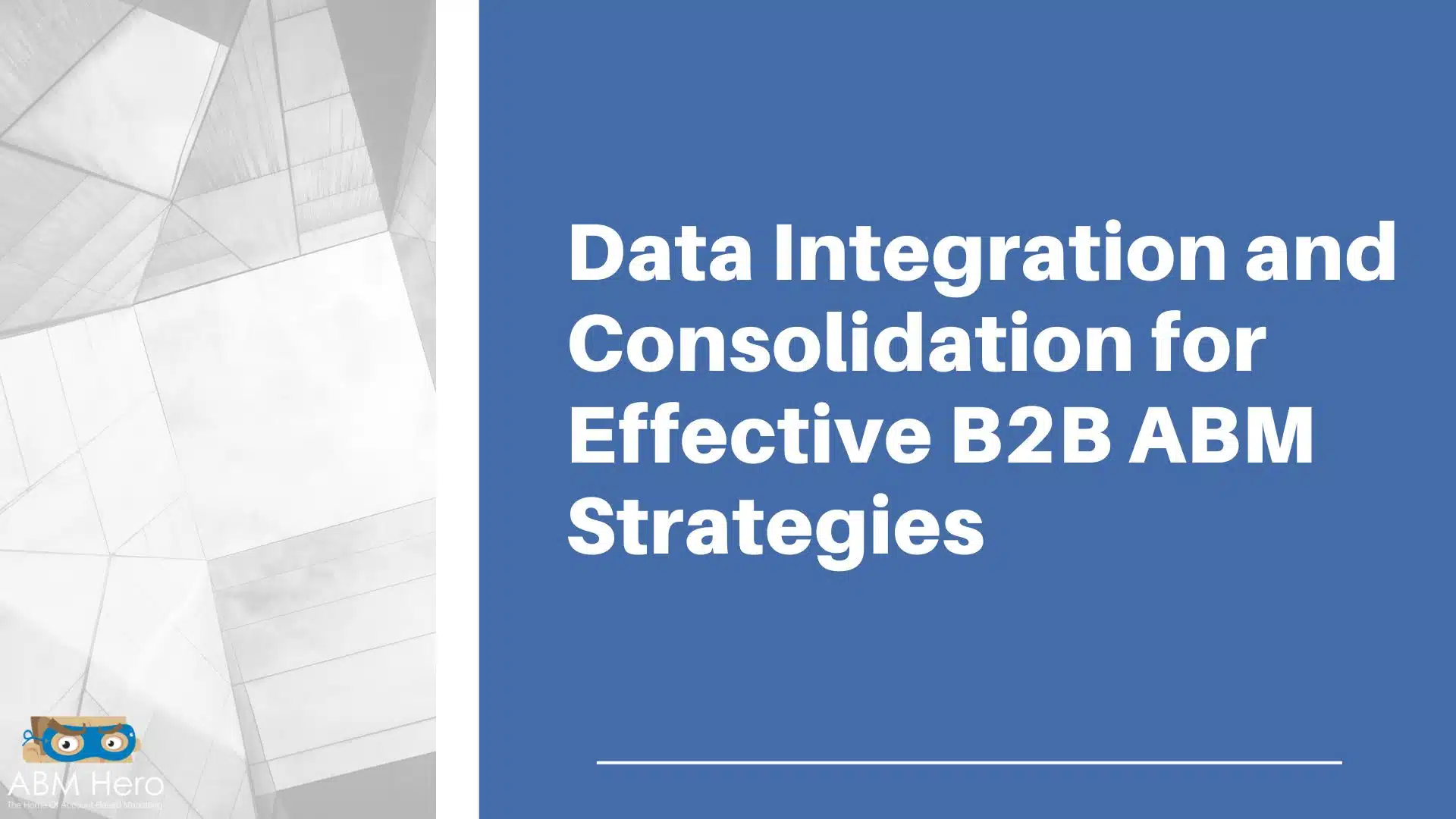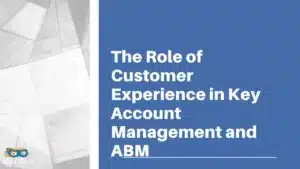Data integration and consolidation are crucial for effective B2B Account-Based Marketing (ABM) strategies.
It allows you to get a complete view of your target accounts. This means understanding their needs, challenges, and pain points so you can create personalized marketing campaigns that are more likely to resonate with them.
This blog post will explore the importance of data integration and consolidation in ABM and discuss how businesses can leverage these practices to drive better results.
What is Data Integration and Consolidation
Imagine you have a big box of Legos. You can build all sorts of things with those Legos, but it would be more difficult if they were all mixed up in a big pile.
Data integration is like taking all the Legos out of the pile and sorting them into different bins to find the ones you need quickly.
In account-based marketing, data integration combines data from different sources into a single database.
This data can come from various places, such as your website, CRM system, social media platforms, and email marketing software.
Once the data is integrated, you can create more targeted and personalized marketing campaigns.
For example, let’s say you offer digital marketing services. You could use data integration to combine data about your website visitors, email subscribers, and social media followers.
This would give you a better understanding of who your target audience is and what they are interested in.
You could then use this information to create marketing campaigns more likely to reach and engage them.
What is Data Integration and Consolidation?
Data integration and data consolidation are two closely related concepts in data management.
Data integration combines data from multiple sources into a consistent data set. This improves the data’s quality, accuracy, and completeness or makes it easier to analyze and report on.
On the other hand, data consolidation is bringing together data from multiple sources into a single location. This improves efficiency, reduces costs, or makes accessing and managing the data easier.
In some cases, data integration and data consolidation can be used interchangeably. However, there are some key differences between the two concepts.
Data integration is typically focused on improving the quality and consistency of the data, while data consolidation is typically focused on improving the efficiency and accessibility of the data.
Benefits of Data Integration and Consolidation
Data integration and consolidation deserve a spotlight in the account-based marketing scene as they provide a gold mine of benefits for the organization to solidify its position in the industry.
Here are some of the benefits of data integration and data consolidation:
Improved Target Account Identification
ABM starts with identifying the right target accounts. Businesses can create a comprehensive view of their target accounts by integrating data from various sources, such as CRM systems, marketing automation platforms, and customer databases.
This integrated data helps businesses identify their most valuable accounts and prioritize their efforts accordingly.
Enhanced Personalization
Personalization is a key component of successful ABM. Businesses need access to accurate and up-to-date data on their target accounts to personalize their marketing and sales outreach.
Consolidating data eliminates duplicates and ensures businesses have a single source of truth for each account. This enables them to deliver highly relevant and tailored messages to decision-makers within these accounts, increasing the chances of conversion.
Streamlined Workflows
Data integration and consolidation simplify workflows by centralizing data management. When all data is consolidated into a single source of truth, businesses can eliminate time-consuming manual processes, reduce errors, and improve overall efficiency.
This allows marketing and sales teams to focus on strategic activities, such as crafting personalized campaigns and building relationships with key stakeholders.
Data-Driven Insights
Integrated and consolidated data provides businesses with valuable insights into their target accounts.
Businesses can identify patterns, trends, and preferences among their target accounts by analyzing this data. This information helps refine ABM strategies, optimize campaigns, and make data-driven decisions to drive better results.
Real-world Uses of Data Integration and Consolidation
Here are some examples of how different industries can use data integration and data consolidation:
Retail: A retailer can use data integration to combine data from its point-of-sale systems, customer loyalty programs, and website to create a single view of its customers. You can use this information to target customers with personalized marketing campaigns.
Manufacturing: A manufacturer can use data integration to combine data from its production systems, quality control systems, and inventory systems to track its products’ performance and identify improvement areas.
Healthcare: A healthcare organization can use data integration to combine data from its electronic health records, billing systems, and patient satisfaction surveys to improve the quality of care it provides.
Data integration and consolidation are complex processes, but they can be essential for businesses that want to improve their operations and make better decisions.
If you are considering implementing data integration or data consolidation, be sure to consult with a qualified data expert.
Best Practices in Data Integration and Consolidation
ABM is a strategic approach targeting specific accounts rather than casting a wide net. It allows businesses to align their marketing and sales efforts to engage key decision-makers within target accounts.
To leverage data integration and consolidation for effective ABM strategies, businesses must follow a few best practices:
Use a CRM System
Invest in a robust Customer Relationship Management (CRM) system that integrates and consolidates data from various sources.
A CRM system serves as a single source of truth, providing a unified view of target accounts and enabling businesses to track interactions and measure campaign effectiveness.
It is a good business practice to use a CRM when integrating and consolidating data for several reasons. This can help improve data accuracy and consistency and make it easier to access and analyze the data.
A CRM system can automate tasks, such as sending email marketing campaigns and scheduling appointments, freeing up your time to focus on other aspects of your business.
Furthermore, a CRM system can generate reports and analyze data, which can be used to enhance your business decisions and monitor your progress toward your goals.
Overall, using a CRM system when integrating and consolidating data can help you improve the accuracy, consistency, efficiency, and accessibility of your data.
This can lead to better decision-making, improved customer service, and increased profits.
Standardize Data
Establish data standards and processes to ensure consistency across different sources.
This includes maintaining accurate contact information, defining data fields, and implementing data governance practices.
Standardized data makes integration and consolidation easier, eliminating duplicate records and conflicting information.
Implement Automation
Leverage automation tools to streamline data integration and consolidation processes.
These tools can pull data from multiple sources, eliminate duplicates, and update records in real-time.
Automation not only saves time but also ensures data accuracy and consistency.
Continuously Enhance Data Quality
Regularly clean and update data to maintain its accuracy and relevance.
Implement data quality checks and establish protocols for ongoing data maintenance.
This helps ensure that ABM efforts are based on high-quality data, leading to better results and insights.
In conclusion, data integration and consolidation are critical for effective B2B ABM strategies.
By integrating and consolidating data, businesses can gain a holistic view of their target accounts, personalize their outreach, streamline workflows, and make data-driven decisions.
To succeed in ABM, businesses must invest in CRM systems, standardize data, automate processes, and continuously improve data quality.
By following these best practices, businesses can unlock the full potential of ABM and drive meaningful results.





